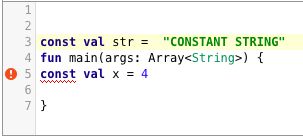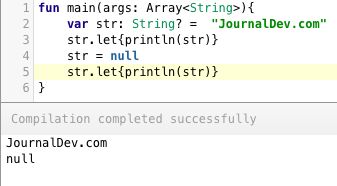kotlin面试_Kotlin面试问题
kotlin面试
Kotlin is the latest JVM programming language from the JetBrains. Google has made it the official language for Android Development along with Java. Developers say it addresses the issues faced in Java programming. I have written a lot of Kotlin tutorials and here I am providing important kotlin interview questions.
Kotlin是JetBrains中最新的JVM编程语言。 Google使其与Java一起成为Android开发的官方语言。 开发人员说,它解决了Java编程面临的问题。 我写了很多Kotlin教程,在这里我提供了重要的Kotlin面试问题。
Kotlin面试问题 (Kotlin Interview Questions)
Here I am providing Kotlin Interview Questions and Answers that will help you in your Kotlin Interviews. These Kotlin interview questions are good for beginners as well as experienced programmers. There are coding questions too to brush up your coding skills.
在这里,我提供了Kotlin面试问答,可以帮助您进行Kotlin面试。 这些Kotlin面试问题对初学者和经验丰富的程序员都非常有用。 还有一些编码问题可以提高您的编码技能。
Kotlin的目标平台是什么? Kotlin-Java如何互操作? (What’s the Target Platform of Kotlin? How is Kotlin-Java interoperability possible?)
Java Virtual Machine(JVM) is the Target Platform of Kotlin. Kotlin is 100% interoperable with Java since both, on compilation produce bytecode. Hence Kotlin code can be called from Java and vice-versa.
Java虚拟机(JVM)是Kotlin的目标平台。 Kotlin可与Java 100%互操作,因为两者在编译时都会产生字节码。 因此,可以从Java调用Kotlin代码,反之亦然。
您如何在Kotlin中声明变量? 声明与Java声明有何不同? (How do you declare variables in Kotlin? How does the declaration differ from the Java counterpart?)
There are two major differences between Java and Kotlin variable declaration:
- The type of declaration
In Java the declaration look like this:String s = "Java String"; int x = 10;In Kotlin the declaration looks like:
In Kotlin, the declaration begins with a
valand avarfollowed by the optional type. Kotlin can automatically detect the type using type inference. - Default value
The following is possible in Java:String s:The following variable declaration in Kotlin is not valid.
Java和Kotlin变量声明之间有两个主要区别:
- 申报类型
在Java中,声明如下所示:String s = "Java String"; int x = 10;在Kotlin中,声明如下所示:
在Kotlin中,声明以
val和var开头,后跟可选类型。 Kotlin可以使用类型推断自动检测类型。 - 默认值
Java中可能有以下内容:String s:Kotlin中的以下变量声明无效。
- The type of declaration
val和var声明有什么区别? 如何将字符串转换为Int? (What’s the difference between val and var declaration? How to convert a String to an Int?)
valvariables cannot be changed. They’re like final modifiers in Java. Avarcan be reassigned. The reassigned value must be of the same data type.fun main(args: Array) { val s: String = "Hi" var x = 5 x = "6".toInt() } We use the
toInt()method to convert the String to an Int.val变量不能更改。 它们就像Java中的最终修饰符。 可以重新分配var。 重新分配的值必须具有相同的数据类型。我们使用
toInt()方法将String转换为Int。什么是Kotlin中的Null安全性和Nullable类型? 猫王算子是什么? (What’s Null Safety and Nullable Types in Kotlin? What is the Elvis Operator?)
Kotlin puts a lot of weight behind null safety which is an approach to prevent the dreaded Null Pointer Exceptions by using nullable types which are like
String?,Int?,Float?etc. These act as a wrapper type and can hold null values. A nullable value cannot be added to another nullable or basic type of value.To retrieve the basic types we need to use safe calls that unwrap the Nullable Types. If on unwrapping, the value is null we can choose to ignore or use a default value instead. The Elvis Operator is used to safely unwrap the value from the Nullable.
It’s represented as?:over the nullable type. The value on the right hand side would be used if the nullable type holds a null.var str: String? = "JournalDev.com" var newStr = str?: "Default Value" str = null newStr = str?: "Default Value"Kotlin在null安全性后面放了很多权重,这是通过使用像
String?这样的nullable类型来防止可怕的Null Pointer异常的一种方法String?,Int?,Float?等等。它们充当包装器类型,可以容纳空值。 无法将可为空的值添加到其他可为空或基本类型的值中。要检索基本类型,我们需要使用安全的调用来拆开可空类型。 如果展开,则该值为null,我们可以选择忽略或使用默认值。 Elvis运算符用于安全地将值从Nullable中解包。
它在可为空的类型上表示为?:。 如果可为空的类型为null,则将使用右侧的值。var str: String? = "JournalDev.com" var newStr = str?: "Default Value" str = null newStr = str?: "Default Value"什么是
const? 它与val有何不同? (What’s aconst? How does it differ from aval?)By default
valproperties are set at runtime. Adding a const modifier on avalwould make a compile-time constant.
Aconstcannot be used with avaror on its own.
Aconstis not applicable on a local variable.
默认情况下,
val属性在运行时设置。 在val上添加const修饰符将使编译时常数。
const不能与var一起使用,也不能单独使用。
const不适用于局部变量。
Kotlin是否允许我们使用基本类型,例如int,float,double? (Does Kotlin allow us to use primitive types such as int, float, double?)
At the language level, we cannot use the above-mentioned types. But the JVM bytecode that’s compiled does certainly have them.
在语言级别,我们不能使用上述类型。 但是,已编译的JVM字节码确实具有它们。
每个Kotlin计划的切入点是什么? (What’s the entry point of every Kotlin Program?)
The
mainfunction is the entry point of every Kotlin program. In Kotlin we can choose not to write the main function inside the class. On compiling the JVM implicitly encapsulates it in a class.
The strings passed in the form ofArrayare used to retrieve the command line arguments.main功能是每个Kotlin程序的入口。 在Kotlin中,我们可以选择不在类内部编写main函数。 编译JVM时会将其隐式封装在一个类中。
以Array形式传递的Array用于检索命令行参数。怎么样
!!不同于 ?。 在展开可为空的值? 还有其他方法可以安全地包装可空值吗? (How is!!different from ?. in unwrapping the nullable values? Is there any other way to unwrap nullable values safely?)!!is used to force unwrap the nullable type to get the value. If the value returned is a null, it would lead to a runtime crash. Hence a!!operator should be only used when you’re absolutely sure that the value won’t be null at all. Otherwise, you’ll get the dreaded null pointer exception. On the other hand, a ?. is an Elvis Operator that does a safe call.
We can use the lambda expressionleton the nullable value to unwrap safely as shown below.
Here the let expression does a safe call to unwrap the nullable type.!!用于强制拆开可为null的类型以获取值。 如果返回的值为null,则将导致运行时崩溃。 因此!!仅在绝对确定该值不会为null时,才应使用operator。 否则,您将得到可怕的空指针异常。 另一方面,?。 是负责安全呼叫的猫王操作员。
我们可以使用lambda表达式let对空值如下图所示安全解开。
在这里,let表达式进行安全调用以解开可为空的类型。如何声明函数? 为什么Kotlin函数被称为顶级函数? (How is a function declared? Why are Kotlin functions known as top-level functions?)
fun sumOf(a: Int, b: Int): Int{ return a + b }A function’s return type is defined after the
:
Functions in Kotlin can be declared at the root of the Kotlin file.在以下位置定义函数的返回类型
:
Kotlin中的函数可以在Kotlin文件的根声明。Kotlin中==和===运算符有什么区别? (What’s the difference between == and === operators in Kotlin?)
== is used to compare the values are equal or not. === is used to check if the references are equal or not.
==用于比较值是否相等。 ===用于检查引用是否相等。
列出Kotlin中可用的可见性修改器。 默认的可见性修改器是什么? (List down the visibility modifiers available in Kotlin. What’s the default visibility modifier?)
- public
- internal
- protected
- private
publicis the default visibility modifier.- 上市
- 内部
- 受保护的
- 私人的
public是默认的可见性修饰符。以下继承结构是否可以编译? (Does the following inheritance structure compile?)
class A{ } class B : A(){ }NO. By default classes are final in Kotlin. To make them non-final, you need to add the
openmodifier.class A{ } class B : A(){ }不行 默认情况下,类在Kotlin中是final。 要使它们成为非最终值,您需要添加
open修饰符。Kotlin中的构造函数类型是什么? 它们有何不同? 您如何在课堂上定义它们? (What are the types of constructors in Kotlin? How are they different? How do you define them in your class?)
Constructors in Kotlin are of two types:
Primary – These are defined in the class headers. They cannot hold any logic. There’s only one primary constructor per class.
Secondary – They’re defined in the class body. They must delegate to the primary constructor if it exists. They can hold logic. There can be more than one secondary constructors.class User(name: String, isAdmin: Boolean){ constructor(name: String, isAdmin: Boolean, age: Int) :this(name, isAdmin) { this.age = age } }Kotlin中的构造方法有两种:
主要的 -这些是在类标题中定义的。 他们不能保持任何逻辑。 每个类只有一个主要的构造函数。
次要的 -它们在类主体中定义。 他们必须委托给主要构造函数(如果存在)。 他们可以保持逻辑。 二级构造器可以有多个。Kotlin中的init块是什么 (What’s init block in Kotlin)
initis the initialiser block in Kotlin. It’s executed once the primary constructor is instantiated. If you invoke a secondary constructor, then it works after the primary one as it is composed in the chain.init是Kotlin中的初始化程序块。 一旦实例化了主要构造函数,它就会执行。 如果调用辅助构造器,则它在主构造器中工作,因为它是在链中组成的。字符串插值在Kotlin中如何工作? 解释一下代码片段? (How does string interpolation work in Kotlin? Explain with a code snippet?)
String interpolation is used to evaluate string templates.
We use the symbol $ to add variables inside a string.val name = "Journaldev.com" val desc = "$name now has Kotlin Interview Questions too. ${name.length}"Using
{}we can compute an expression too.字符串插值用于评估字符串模板。
我们使用符号$在字符串中添加变量。使用
{}我们也可以计算一个表达式。构造函数内部的参数类型是什么? (What’s the type of arguments inside a constructor?)
By default, the constructor arguments are
valunless explicitly set tovar.默认情况下,除非显式设置为
var否则构造函数参数为val。是Kotlin中的新关键字吗? 您将如何在Kotlin中实例化类对象? (Is new a keyword in Kotlin? How would you instantiate a class object in Kotlin?)
NO. Unlike Java, in Kotlin, new isn’t a keyword.
We can instantiate a class in the following way:class A var a = A() val new = A()不行 与Java不同,在Kotlin中,new不是关键字。
我们可以通过以下方式实例化一个类:Kotlin中的switch表达式等效吗? 与开关有何不同? (What is the equivalent of switch expression in Kotlin? How does it differ from switch?)
when is the equivalent of
switchinKotlin.
The default statement in a when is represented using the else statement.var num = 10 when (num) { 0..4 -> print("value is 0") 5 -> print("value is 5") else -> { print("value is in neither of the above.") } }whenstatments have a default break statement in them.什么时候相当于
Kotlin的switch。
when中的默认语句使用else语句表示。when语句中有默认的break语句时。Kotlin中的数据类是什么? 是什么使它们如此有用? 如何定义它们? (What are data classes in Kotlin? What makes them so useful? How are they defined?)
In Java, to create a class that stores data, you need to set the variables, the getters and the setters, override the
toString(),hash()andcopy()functions.
In Kotlin you just need to add thedatakeyword on the class and all of the above would automatically be created under the hood.data class Book(var name: String, var authorName: String) fun main(args: Array) { val book = Book("Kotlin Tutorials","Anupam") } Thus, data classes saves us with lot of code.
It creates component functions such ascomponent1()..componentN()for each of the variables.在Java中,要创建一个存储数据的类,您需要设置变量,getter和setter,并覆盖
toString(),hash()和copy()函数。
在Kotlin中,您只需要在类上添加data关键字,以上所有内容就会在后台自动创建。data class Book(var name: String, var authorName: String) fun main(args: Array) { val book = Book("Kotlin Tutorials","Anupam") } 因此,数据类为我们节省了很多代码。
它为每个变量创建组件函数,例如component1()..componentN()。什么是Kotlin中的销毁声明? 举例说明。 (What are destructuring declarations in Kotlin? Explain it with an example.)
Destructuring Declarations is a smart way to assign multiple values to variables from data stored in objects/arrays.
Within paratheses, we’ve set the variable declarations. Under the hood, destructuring declarations create component functions for each of the class variables.
解构声明是将对象/数组中存储的数据的多个值分配给变量的一种聪明方法。
在括号内,我们设置了变量声明。 在幕后,解构声明为每个类变量创建组件函数。
内联函数和中缀函数有什么区别? 举一个例子。 (What’s the difference between inline and infix functions? Give an example of each.)
Inline functions are used to save us memory overhead by preventing object allocations for the anonymous functions/lambda expressions called. Instead, it provides that functions body to the function that calls it at runtime. This increases the bytecode size slightly but saves us a lot of memory.
infix functions on the other are used to call functions without parentheses or brackets. Doing so, the code looks much more like a natural language.
内联函数用于防止调用匿名函数/ lambda表达式的对象分配,从而节省了内存开销。 相反,它在运行时将函数主体提供给调用它的函数。 这会稍微增加字节码的大小,但可以节省大量内存。
另一方面, infix函数用于调用不带括号或括号的函数。 这样做,代码看起来更像是一种自然语言。
lazy和lateinit有什么区别? (What’s the difference between lazy and lateinit?)
Both are used to delay the property initializations in Kotlin
lateinitis a modifier used with var and is used to set the value to the var at a later point.
lazyis a method or rather say lambda expression. It’s set on a val only. The val would be created at runtime when it’s required.val x: Int by lazy { 10 } lateinit var y: String两者都用于延迟Kotlin中的属性初始化
lateinit是与var一起使用的修饰符,用于稍后将值设置为var。
lazy是一种方法,或者说是lambda表达式。 它仅在val上设置。 val将在需要时在运行时创建。如何创建Singleton类? (How to create Singleton classes?)
To use the singleton pattern for our class we must use the keyword
objectobject MySingletonClassAn
objectcannot have a constructor set. We can use the init block inside it though.要为我们的类使用单例模式,我们必须使用关键字
objectobject不能具有构造函数集。 我们可以在其中使用init块。Kotlin是否有static关键字? 如何在Kotlin中创建静态方法? (Does Kotlin have the static keyword? How to create static methods in Kotlin?)
NO. Kotlin doesn’t have the static keyword.
To create static method in our class we use thecompanion object.
Following is the Java code:class A { public static int returnMe() { return 5; } }The equivalent Kotlin code would look like this:
To invoke this we simply do:
A.a().不行 Kotlin没有static关键字。
要在我们的类中创建静态方法,请使用companion object。
以下是Java代码:class A { public static int returnMe() { return 5; } }等效的Kotlin代码如下所示:
要调用它,我们只需做:
Aa()。以下数组的类型是什么? (What’s the type of the following Array?)
val arr = arrayOf(1, 2, 3);The type is Array
. 类型是Array
。
That’s all for Kotlin interview questions and answers.
这就是Kotlin面试问题和答案的全部内容。
翻译自: https://www.journaldev.com/20567/kotlin-interview-questions
kotlin面试

